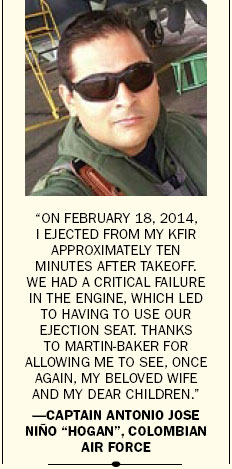INDIAN ARMED FORCES CHIEFS ON OUR RELENTLESS AND FOCUSED PUBLISHING EFFORTS

The insightful articles, inspiring narrations and analytical perspectives presented by the Editorial Team, establish an alluring connect with the reader. My compliments and best wishes to SP Guide Publications.

"Over the past 60 years, the growth of SP Guide Publications has mirrored the rising stature of Indian Navy. Its well-researched and informative magazines on Defence and Aerospace sector have served to shape an educated opinion of our military personnel, policy makers and the public alike. I wish SP's Publication team continued success, fair winds and following seas in all future endeavour!"

Since, its inception in 1964, SP Guide Publications has consistently demonstrated commitment to high-quality journalism in the aerospace and defence sectors, earning a well-deserved reputation as Asia's largest media house in this domain. I wish SP Guide Publications continued success in its pursuit of excellence.
- The layered Air Defence systems that worked superbly, the key element of Operation Sindoor
- Operation Sindoor | Day 2 DGMOs Briefing
- Operation Sindoor: Resolute yet Restrained
- India's Operation Sindoor Sends a Clear Message to Terror and the World – ‘ZERO TOLERANCE’
- Japan and India set forth a defence cooperation consultancy framework, talks on tank and jet engines
Nearly 7,000 Lives Saved
It is the pilots’ last chance to get out alive

The Chalet of Martin-Baker at Farnborough International Airshow was a show-stopper. Not that it was designed in a unique or extraordinary way. It was simple, but the words on the Chalet exterior stopped everyone in their tracks. Nearly 7,000 lives saved, it said. And any life saved is certainly worth looking at what helped save that life.
It is the ejection seat
It was on April 1, 1961, the first live static rocket ejection seat test took place with pilot Doddy Hay and with Sir James Martin overseeing it. From then there has been no looking back and Martin-Baker, the world’s leading manufacturer of ejection seats, has come to the rescue of many a military pilot in a near-death situation. “It is the pilot’s last chance to get out alive,” avers Geoff Barnes, Head of Programmes, Martin-Baker.
Martin-Baker, proudly announces Barnes, has been the first company to productionise a concept and make good business out of it. “We are the market leaders with over 70 per cent share. It is not because we started early, but because of our reliability factor. We have around 30 successful ejections in a year.”
It is the only company that can offer a fully integrated escape system that satisfies the very latest in pilot operational capability and safety standards. Martin-Baker offers a complete ‘end-to-end service’, from helping the customer to establish operational safety and escape requirements, including design, development and qualification, to ongoing support throughout the entire service life of the aircraft.

Every facet of the safety system from initiation, escape path clearance, ejection sequencing, stabilisation, life support and parachute descent to final rescue, must work perfectly to safeguard a precious life. The company has accordingly developed a range of special crashworthy seats for helicopters and fixed-wing aircraft. These crash attenuating seats can be fitted in most maritime patrol and reconnaissance aircraft. Martin-Baker currently equips over 60 helicopter variants with crashworthy seats.
Barnes mentions “Our ejection seats are 25 different platforms on both fixed- and rotary-wing.” Martin-Baker has manufactured ejection seats continuously since 1946, producing over 75,000 seats to date. “There are almost about 30 successful ejections in a year,” he says and adds that how the pilots acknowledge its importance.
Displaying the MK17 ejection seat at the show, he states, that it is the latest and is on the F-35 joint strike fighter. Mk17 is for a light aircraft, nevertheless it can go up to F-35 II. It has the latest technology with an inflatable neck guard that protects the head when moving at high speeds.
The Mk17 ultra lightweight escape system is compact and very simple in design and operation. It has been developed specifically for basic and primary trainer aircraft where seat weight and size are critically important. Life-cycle cost considerations are also a primary design driver, resulting in a seat design with only 50 per cent the pyrotechnic device count of other modern ejection seats and minimal maintenance overheads. The seat provides safe escape capability for aircraft speeds in the range 60 knots at ground level to 250 knots calibrated airspeed (KCAS) and pressure altitudes in the range sea level to 25,000 ft. It is capable of providing safe escape for aircrew in the weight range 103 to 245 lbs (47 to 111 kg) nude. The Mk17 escape system provides safe means of escape from a basic training aircraft, a feature which hitherto has been unavailable. Other benefits include low life-cycle costs, half the pyrotechnic cartridges required for Mk16, no under seat rocket motor and minimal maintenance overheads.
When asked about Martin-Baker’s presence in India, Barnes mentioned that the zero-zero ejection seats are fitted on the light combat aircraft (LCA) Tejas and on the Hawk 132 advanced jet trainer. Similarly, all the Pilatus aircraft which the Indian Air Force is acquiring will have ejections seats from Martin-Baker. “We have a very strong relationship with the Indian Air Force.”





